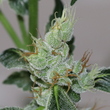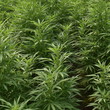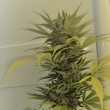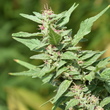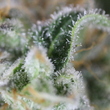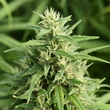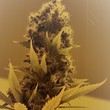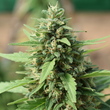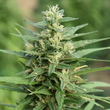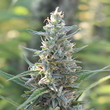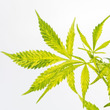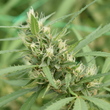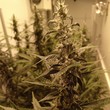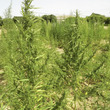Introducción
Traditionally Hemp (Cannabis sativa L.), has been used or applied in the textile industry, and in some cases, to obtain oil and seeds for animal feed or human food, however one of the most promising hemp applications is related to the production of cannabinoids and other secondary metabolites for biomedical applications. In response to this situation, in recent times hemp cultivation is increasing because the booming demand for minor not psychotropic cannabinoids, particularly for cannabidiol (CBD) and cannabigerol (CBG) (Maxmen, 2018).
Within the most known cannabinoids, delta-9-tetrahydrocannabínol (∆9-THC), CBD and CBG are the most important compounds, although there are several other secondary metabolites, such as terpenoids and flavonoids, whose effects and interactions are being investigated.
Biosynthesis and accumulation of cannabinoids is not exclusively governed by the plant genetic profile, but also by the growth conditions. In this regard, to obtain high concentrations of secondary metabolites together with a high yield on plant biomass, abundant light irradiation is needed, and for this reason the hemp cultivation for biomedical applications in semi-arid Mediterranean areas seems to be promising. In addition, the system used for this crop can supply improvement, regarding to this several trials report better results in plants grown under polyethylene-covered tunnel structures instead open-field conditions.
In order to obtain a homogenic and stable chemotype together yield the asexually propagated to obtain “clones” of a specific variety would be the most efficient alternative keeping the levels of CBD and CBG and the rest of features for each variety.
Considering the scarce experiences and data to field performance, the goal of this work was to evaluate the potential yield of five new hemp Phytoplant Research varieties (Sara, Pilar, Aida, Theresa, and Juani) cultivated under high tunnel conditions in a semi-arid Mediterranean area, and also to study the effect of plant density on active biomass and cannabinoids biosynthesis at different plant positions.
Materiales y métodos
The trial was carried out during two consecutive years (2014 and 2015) in an experimental orchard belonging to the Andalusian Institute of Training and Agricultural Research (IFAPA, in Spanish); located in the Guadalquivir river basin, SW Spain (37º 301 47" N; 05º 581 0211 W) as the result of the established collaboration between IFAPA and Phytoplant Research S.L. with a climate is typically Mediterranean-dry with an annual rainfall of 550 mm and soil it is a Typical Fluvisol (USDA, 2016), with a useful depth up to 2.5 m with low content of organic matter
Three new hemp Phytoplant Research S.L varieties with CBD chemotype, registered in the European Union Community Plant Variety Office, (Sara, Pilar, Theresa) and two with CBG chemotype (Aida and Juani) were tested. All hemp varieties were grown under polyethylene-covered tunnel structures (plastic macro-tunnels), with an useful surface was 176 m2. These three varieties were transplanted on 28 May with a density for each high-tunnel of 9,777 plants· ha-1.
During the studied seasons, irrigation doses were estimated according to the methodology, and following the recommendations described in several previous and documented experiences.At the end of season, the total irrigation volume applied was close to 400 mm. Fertilization were performed using exclusively Terra Vega (CANNA España SL) and Terra Vega + Terra Flores, (CANNA España SL). At the end of the season, plants had received 115-75-160 kg· ha-1 of NPK.
Throughout 2015, two new Phytoplant Research S.L varieties (Theresa and Juani with CBD and CBG chemotypes, respectively), were tested. All varieties were cultivated within the same high tunnels used in the previous season were transplanted at the end of May - beginning of June. During this second season, and considering the plant development in 2014, three different plant densities (PD) were tested 9,777 (PD1), 7,333 (PD2 )and 5,866 (PD3) plants ha-1.
Regarding the measurements, at the end of the studied seasons, fresh weight, dry weight was recorded, leaves and flowers were pulled apart from the stems, obtaining dry weight of leaves and flowers, and the dry weight of stems and branches separately. Additionally, the active biomass content in plant organs distributed in three equal positions was measured: upper, medium, and lower. Cannabinoids contents were measured by using the official method, (EC) No 1177/2000 of 31 May 2000 Annex C, named “Community method for the quantitative determination of THC content of hemp varieties”. The experimental design In 2014, was of randomized complete blocks, considering four replications per variety with an experimental plot with 40 plants. In 2015, the experimental design was the same as in the previous season, considering four replications per variety with 40, 32, and 24 plants per experimental plot,
Resultados
During 2014, Sara, Pilar and Aida were studied. Related to the CBD varieties, Sara offered the most promising results for fresh weight, and total dry weight. During 2015, two varieties with CBG (Aida and Juani) and two varieties with CBD chemotypes (Sara and Theresa) were tested, In the case of CBD, Sara was much more productive than Theresa, obtaining almost 83% more active biomass. Relating to the PD effects, both PD1 and PD3 showed the best results. When was studied the cross effects of variety x PD, the most relevant findings were fixed for Sara PD1, followed by Sara PD3 and Theresa PD1 and PD3.In the case of CBG chemotype, Juani had the best result of dry weight. In terms of cannabinoids in the three varieties was studied, Sara was the most effective in terms of CBD and CBDV cannabinoids. The total amount of cannabinoids in this variety was 77% higher in Sara than Pilar
Throughout of 2015 for all the cannabinoids analysed showed something similar to the observations in the previous season. Sara and Theresa produced higher amounts of CBD, in comparison to Juani and Aida, which were the varieties that produced higher amounts of CBG as shown.
Within each different chemotype, Sara produced significant higher amounts of CBD than Theresa. Relating to the Juani and Aida, Aida produced the highest content of CBG and total cannabinoids in relation to Juani. More relevant were the results related to the effects of PD in the cannabinoids production. In this way, PD3 was the most productive for total cannabinoids, followed by PD2 and PD1.
Finally, a significant effect derived from the plant organs position was found. On overall, upper and medium positions were the most productive.
Conclusión
Up to day, there are not similar scientific works as the present study, taking into account two novelties: i) the production system; under macro-tunnel plastic and no-controlled conditions; ii) and the usage of new hemp varieties without a negligible psychotropic cannabinoids production, and higher concentrations of other therapeutic cannabinoids
In relation to active biomass production, for Sara and Theresa the results oscillated in a maximum between 3,478 and 2,495 respectively, and 2,769 kg· ha-1 for Pilar. In addition, considering the CBG varieties, for Aida, offered productions ranged between 4,190 kg· ha-1 in 2014 and 3,284 kg· ha-1 in 2015; whereas for Juani, the other CBG variety tested in this work, the production were close to 4,777 kg· ha-1. There were no significant differences in terms of active biomass between Sara and Pilar, although Pilar improved the results related to the ratio of dry weight of flowers and leaves vs. total dry weight; (65 vs. 42%) even more, when these results are compared with Ermes variety (38%).
Focusing in the final production of cannabinoids and in the chemotype for each studied variety, the highest productions of CBD were obtained in Sara under PD1 and PD3, and the worst in Theresa. Related to the CBG varieties, no significant differences were found between Aida and Juani. In recent years, many researchers have studied the potential usage and applications of different non psychotropic cannabinoids (such as CBD and CBG) for biomedical purposes because of its interaction capability to contribute to the pharmacological power of medicinal hemp extracts. One example of these new applications was the approval of Sativex in June 2011 for treating spasticity caused by multiple sclerosis.
In case of CBD and CBG concentrations in flowers and leaves, these levels are among 2 and 20 times higher in drug-type cultivars than in fiber-types while the THC concentrations were between 4 to 30 times higher in leaves of drug cultivars than fiber type cultivars as several studies can confirm.
According to the conclusions of the present study, the CBD productions were up to 350 kg· ha-1, whereas, under indoor controlled conditions could reach around 84 kg· ha-1 CBD as has been recorded in some studies. Thus, the use of these new Phytoplant Research S.L varieties under the growing conditions would ensure a high cost-effective production of non-psychotropic cannabinoids with significant energy savings and positioning the hemp as a good alternative to other irrigated crops in semi-arid Mediterranean areas such as South Spain.
Otras publicaciones
Ver más
Ver más
Ver más
Ver más
Ver más
Ver más
Ver más
Ver más
Ver más
Ver más
Ver más
Ver más
Ver más
Ver más
Ver más
Ver más
Ver más
Ver más
Ver más
Ver más
Ver más
Ver más
Ver más
Ver más
Ver más
Solicita información
¿Te podemos ser de ayuda? ¿Tienes alguna duda sobre nosotros? Escríbenos y contactaremos contigo cuanto antes.
